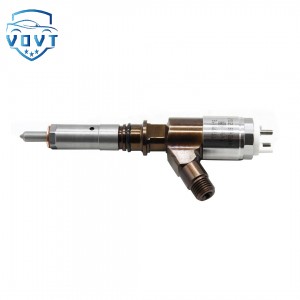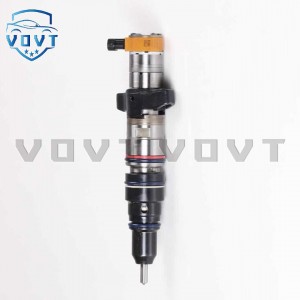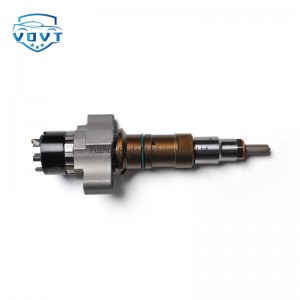Made in China Good Quality 23600-69055 Diesel Fuel Injector Common Rail Injector Engine Parts
products description
| Reference. Codes | 23600-69055 |
| Application | / |
| MOQ | 4PCS |
| Certification | ISO9001 |
| Place of Origin | China |
| Packaging | Neutral packing |
| Quality Control | 100% tested before shipment |
| Lead time | 7~10 working days |
| Payment | T/T, L/C, Paypal, Western Union, MoneyGram or as your requirement |
What are the differences in the application of injectors in different types of engines?
The selection of fuel injectors is closely related to the combustion mode, fuel characteristics and injection logic of the engine. The following is a comparison from the three categories of gasoline engines, diesel engines and special fuel engines:
Application of fuel injectors in gasoline engines
1. Multi-point electronic injection (MPI) gasoline engine
Injection method: injection in the intake manifold (manifold injection), the injector is installed near the cylinder of the intake manifold.
Core requirements:
Low-pressure injection (2-5MPa), the fuel is mixed with the air during the intake stroke to form a homogeneous mixture;
Mostly electromagnetic fuel injectors, top oil inlet structure, 1-2 spray holes (diameter 0.2-0.3mm), spray angle 90°-120°, adapted to the low viscosity characteristics of gasoline.
Typical case: Toyota 1ZR-FE engine, using Denso electromagnetic fuel injectors, injection pressure 3bar, response time 2.5ms, to meet the uniform atomization requirements in the manifold.
2. Gasoline direct injection (GDI) engine
Injection method: direct injection in the cylinder, the injector is installed vertically or obliquely on the cylinder head.
Core differences:
High-pressure injection (5-35MPa), which needs to resist the high pressure of the compression stroke in the cylinder (up to 12MPa);
Bottom-inlet electromagnetic injector or piezoelectric injector, 6-12 spray holes (diameter 0.1-0.2mm), spray particle size ≤5μm, and stratified combustion is achieved with the pit on the top of the piston;
Support multiple injections (such as single injection at idle speed, 2-3 injections at full load), and the injection timing is accurate to within 1°CA of the crankshaft angle.
Typical case: Volkswagen EA888 Gen3 engine, using Bosch piezoelectric injector, injection pressure 20MPa, can achieve 3 injections per cycle, and reduce fuel consumption by 15%.
Application of fuel injectors in diesel engines
1. Traditional mechanical fuel injectors (pump-pipe-nozzle system)
Application scenarios: old diesel engines (such as agricultural machinery, small generator sets).
Technical features:
Mechanical drive (camshaft drives the oil pump), opening pressure 10-25MPa, relying on the high pressure of fuel to directly push the needle valve open;
Axial needle injectors are the main type, with 1-4 spray holes, poor spray atomization (particle size ≥ 20μm), fixed injection timing, and high emissions (obvious black smoke).
2. Electronically controlled common rail diesel engine injectors
Injection method: driven by high-pressure common rail system, direct injection into the cylinder.
Core breakthroughs:
Ultra-high pressure injection (100-250MPa), Bosch CRIN3 injector can reach 220MPa, spray particle size ≤10μm;
Piezoelectric or servo valve controlled electromagnetic injector, supports 5-8 times/cycle injection (pre-injection, main injection, post-injection), precise control of combustion phase;
Multi-spray hole design (6-10 holes), spray cone angle 140°-160°, matching the combustion chamber of diesel engine with high compression ratio (16:1-22:1);
Integrated pressure sensor (accuracy ±0.5MPa) and temperature compensation function, adapt to -40℃-125℃ working environment.
Typical case: Cummins X15 engine, using Cummins XPI injector, 200MPa pressure with 8-hole injection, nitrogen oxide (NOx) emissions meet the National VI b standard.
Injector adaptation for special fuel engines
1. Natural gas engine (CNG/LNG)
Injector type: gas injection valve (non-liquid injector), pressure resistance of 20MPa or above (CNG);
Differences:
Use solenoid valve to control gas flow, injection aperture 5-10mm (much larger than fuel injector), response time ≤10ms;
Some models use premixed injection (intake manifold), which requires anti-backfire design.
2. Hybrid engine (HEV/PHEV)
Technology integration:
Gasoline engine direct injection injectors need to be compatible with frequent start-stop conditions, and increase anti-cavitation design (such as hard chrome plating of the spray hole);
Some diesel engine injectors support the "Miller cycle", which optimizes the expansion ratio by closing the intake valve late and injecting multiple times, such as Toyota D-4D hybrid diesel engine.
Core parameter comparison table
Engine type Injection pressure range Injector type Number of spray holes Spray particle size Typical injection times/cycles
Multi-point electronic injection gasoline engine 0.2-0.5MPa Top oil inlet electromagnetic type 1-2 holes 10-20μm 1 time
Direct injection gasoline engine 5-35MPa Bottom oil inlet electromagnetic/piezoelectric 6-12 holes ≤5μm 2-3 times
Traditional diesel engine 10-25MPa Mechanical shaft needle type 1-4 holes ≥20μm 1 time
Electronic control common rail diesel engine 100-250MPa Piezoelectric/servo electromagnetic type 6-10 holes ≤10μm 5-8 times
Technical logic summary
Gasoline engine injector: The core contradiction is "atomization uniformity" and "anti-carbon deposition". Direct injection needs to solve the problems of high-pressure fuel scouring and valve carbon deposition (such as Volkswagen FSI Technology uses gasoline injection to clean the intake valve);
Diesel engine injector: The core challenges are "ultra-high pressure sealing" and "multiple injection control". The nanosecond response of piezoelectric crystals (such as Bosch's third-generation piezoelectric injector delay ≤ 0.3ms) is the key to achieving precise combustion;
Special fuel injection: The essence is "fluid form adaptation". Gas injection needs to balance flow control accuracy and pressure resistance, and hybrid power requires the injector to adapt to more complex working condition switching logic.
From the above differences, it can be seen that the design of the injector has always revolved around the trinity of "fuel characteristics - combustion mode - emission requirements". Its technical iteration (such as from mechanical to electronic control, from single injection to multiple injection) is essentially a microcosm of the development of engine efficiency and cleanliness.
Related products
| 1 | 5WS40200 | 11 | A2C59514909/ | 21 | 31336585 |
| 2 | FA2C53252642 | 12 | A2C59511602 | 22 | 36001726 |
| 3 | 1685796 | 13 | A2C59513556 | 23 | 1709667 |
| 4 | 31303994 | 14 | 5ws40677 | 24 | 36001727 |
| 5 | 50274V05 | 15 | 50274V0 | 25 | 9445R |
| 6 | 5WS40087 | 16 | 5WS40677 | 26 | 00Q1T |
| 7 | 16600-00Q1T | 17 | AV6Q9F593-AB | 27 | 5WS40007 |
| 8 | 00Q0H | 18 | AV6Q9F593-AA | 28 | A2C59513997 |
| 9 | 5WS40148-Z | 19 | A2C59511606 | 29 | 5WS40250 |
| 10 | 2S6Q-9F593-AB | 20 | 16600-00Q0P | 30 | A2C59514912 |

























